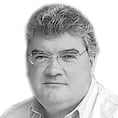A 1910 masterpiece by the Russian father of modern abstract art, Wassily Kandinsky, is to be returned by a Dutch museum to the heirs of a Jewish family from whom it was looted during the second World War – the first major act of restitution by a specialist committee set up in 2001.
The painting, Blick auf Murnau mit Kirche or View of Murnau with Church, is to be returned immediately to the family of Johanna Margarethe Stern-Lippmann by the Van Abbe Museum in Eindhoven after the restitutions committee reversed a previous ruling issued in January 2018.
After years of at-times rancorous disagreement over the artwork, the seven-member committee says in a new opinion currently posted on its website that its latest decision is “binding”, accepting that it was not in possession of “new facts” that have emerged since it rejected the family’s claim.
Although there is no mention of the market value of the painting in the latest assessment, and that hasn’t been addressed publicly by the Stern-Lippmann family, other works by Kandinsky in the same style and from the same period typically fetch in or around €20 million.
RM Block
Members of the family said in a joint statement that their “sense of justice” had been restored by the committee’s decision to reverse itself. “The painting used to have a prominent position hanging in our great grandparents’ house and tells much of our family’s story”, the statement said. “It’s an acknowledgment of the injustice that we, and so many others like us, have endured over the years.”
Ironically, it’s understood that the first time the Stern-Lippmanns became aware that the work had gone missing was when the Van Abbe Museum itself – which specialises in contemporary and modern European art – identified it as potentially looted, with a suspect provenance, in 2013.
It subsequently transpired that it had been bought by the museum in 1951 from a Dutch vendor in The Hague whose name appeared on a red-flagged list of dealers suspected of trading in art that was looted by the Nazis or taken in forced sales. That dealer claimed he’d bought the work from an “A. Kaufmann”, of whom there were no further details.
At one point the Stern-Lippmann family instigated legal action against the museum but subsequently dropped it in favour of a request for a formal review of the ownership, which led to the latest decision.
In relation to that chain of ownership, the restitution committee’s amended judgment now reads: “Margarethe’s loss of possession took place during the occupation when she was a private individual who, because of her Jewish descent, belonged to a persecuted population group. The committee therefore assumes that her loss of possession was involuntary.”
Anastasia van Gennip, a director of the museum, which is operated by Eindhoven City Council, said they had always taken the view that historical justice had to be done in such cases. “That is why we’ve taken part in all the investigations with an open mind and worked willingly with the family.”






















